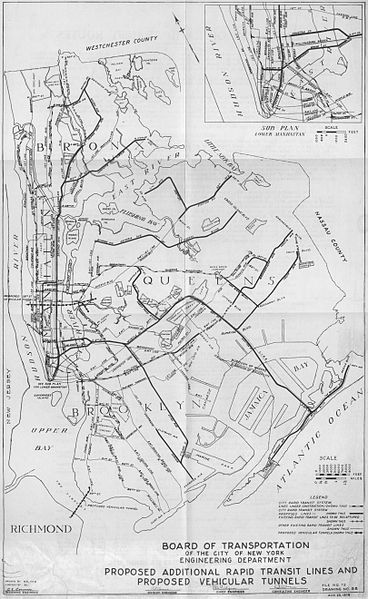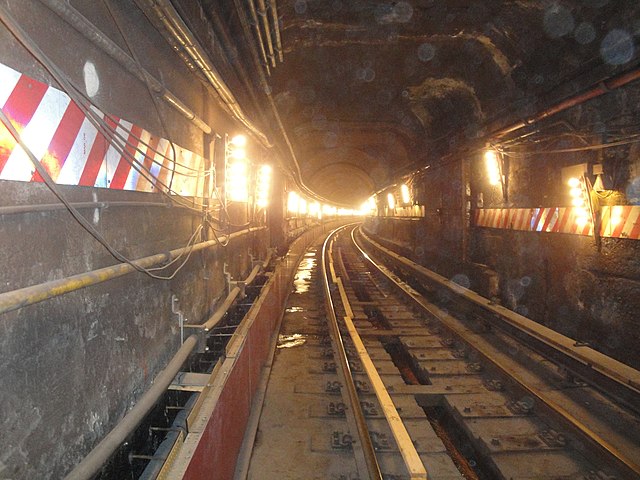Proposed expansion of the New York City Subway
Since the opening of the original New York City Subway line in 1904, and throughout the subway's history, various official and planning agencies have proposed numerous extensions to the subway system. The first major expansion of the subway system was the Dual Contracts, a set of agreements between the City of New York and the IRT and the BRT. The system was expanded into the outer reaches of the Bronx, Brooklyn, and Queens, and it provided for the construction of important lines in Manhattan. This one expansion of the system provided for a majority of today's system.
A 1929 plan
A 1939 plan
At East Broadway on the IND Sixth Avenue Line (shown), part of a two-track station was built for the IND Worth Street Line under East Broadway, above the existing line. The indent for the never-built line is seen at the top of the picture, crossing the ceiling.
The Lexington Avenue–63rd Street subway station has two island platforms split across two levels. Their northern sides were walled off until the first phase of the Second Avenue Subway was opened. This is the station's lower level.
The Dual Contracts, also known as the Dual Subway System, were contracts for the construction and/or rehabilitation and operation of rapid transit lines in the City of New York. The contracts were signed on March 19, 1913, by the Interborough Rapid Transit Company and the Brooklyn Rapid Transit Company. As part of the Dual Contracts, the IRT and BRT would build or upgrade several subway lines in New York City, then operate them for 49 years.
The original "H" system that predated the contracts
The large Chambers Street station was the BMT's Manhattan hub.
The IRT rebuilt the Steinway Tunnel, originally a trolley tunnel, for subway use.
1911 plan, giving all the contracts to the BRT








